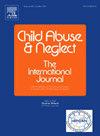Latent class patterns of adverse childhood experiences and mental health among National Guard recruits
IF 3.4
2区 心理学
Q1 FAMILY STUDIES
引用次数: 0
Abstract
Background
Most studies have relied on a cumulative risk approach when examining adverse childhood experiences (ACEs). This approach assumes equal weighting of adversities and fails to consider how the nature, severity, and combination of ACEs may differentially impact outcomes.
Objective
Employing a person-centered approach, we identified distinct patterns of ACEs in a sample of Army National Guard recruits and investigated how these patterns relate to internalizing symptoms (i.e., self-reported mental health) and externalizing problems (i.e., substance use and rule-breaking behaviors).
Participants and setting
Participants were 1201 Army National Guard recruits from the Advancing Research on Mechanisms of Resilience (ARMOR) study.
Methods
Latent class analysis (LCA) was performed to identify distinct latent classes of recruits with similar ACEs patterns. Associations between classes and mental health and behavioral outcomes of interest were examined using the Bolck-Croon-Hagenaars (BCH) method.
Results
LCA revealed four latent classes of ACEs: (1) low adversity (51.1 %), (2) emotional and physical maltreatment (18.3 %), (3) poly-adversity (16.1 %), and (4) parental separation (14.5 %). There were no significant interclass differences found in internalizing symptoms or substance use. However, the emotional/physical maltreatment and low adversity classes showed significantly higher counts of rule-breaking behaviors than the other classes.
Conclusions
Findings suggest recruits enter military service reporting distinct patterns of ACEs, which are differentially associated with rule-breaking behaviors but not mental health outcomes or substance use.
国民警卫队新兵不良童年经历与心理健康的潜在阶级模式。
背景:大多数研究在检查不良童年经历(ace)时依赖于累积风险方法。这种方法假设逆境的权重相等,但没有考虑不良反应的性质、严重程度和组合可能对结果产生的不同影响。目的:采用以人为本的方法,我们在陆军国民警卫队新兵样本中确定了不同的ace模式,并调查了这些模式与内化症状(即自我报告的心理健康)和外化问题(即物质使用和违反规则行为)的关系。参与者和环境:参与者为1201名国民警卫队新兵,他们来自于“心理弹性机制研究进展”(ARMOR)项目。方法:采用潜类分析(LCA),对具有相似ace模式的新兵进行不同潜类分析。使用Bolck-Croon-Hagenaars (BCH)方法检查班级与心理健康和感兴趣的行为结果之间的关系。结果:LCA显示4种潜在的ace类型:(1)低逆境(51.1%),(2)情绪和身体虐待(18.3%),(3)多重逆境(16.1%),(4)父母分离(14.5%)。在内化症状或物质使用方面没有发现显著的班级间差异。然而,情绪/身体虐待和低逆境班级的违规行为数量明显高于其他班级。结论:研究结果表明,新兵进入军队后报告了不同的ace模式,这些模式与违反规则的行为不同,但与心理健康结果或药物使用无关。
本文章由计算机程序翻译,如有差异,请以英文原文为准。
求助全文
约1分钟内获得全文
求助全文
来源期刊

Child Abuse & Neglect
Multiple-
CiteScore
7.40
自引率
10.40%
发文量
397
期刊介绍:
Official Publication of the International Society for Prevention of Child Abuse and Neglect. Child Abuse & Neglect The International Journal, provides an international, multidisciplinary forum on all aspects of child abuse and neglect, with special emphasis on prevention and treatment; the scope extends further to all those aspects of life which either favor or hinder child development. While contributions will primarily be from the fields of psychology, psychiatry, social work, medicine, nursing, law enforcement, legislature, education, and anthropology, the Journal encourages the concerned lay individual and child-oriented advocate organizations to contribute.
 求助内容:
求助内容: 应助结果提醒方式:
应助结果提醒方式:


